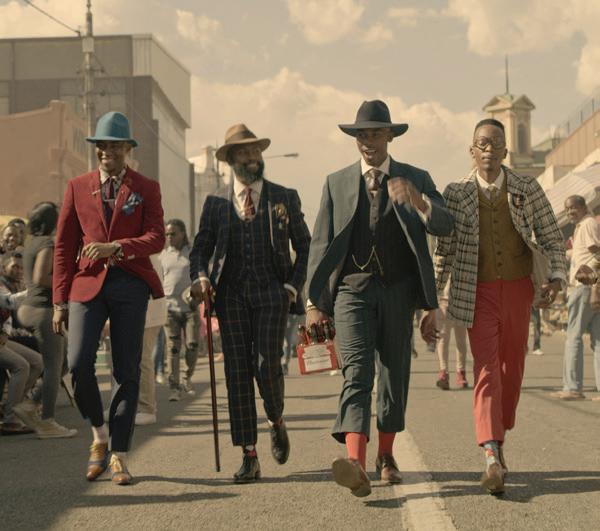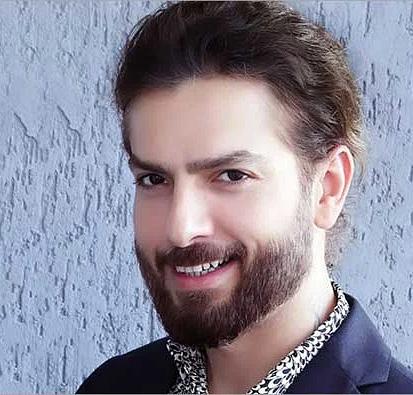
4 minute read
big disruption 5G: the next
With 5G being rolled out at pace across India, the country’s creative community is already mining the technology’s potential to create innovative strategies for brands.
Simran Sabherwal, associate editor at exchange4media, explains why 5G is set to disrupt India’s creative landscape
Advertisement











IF DIGITAL humans coming to life, augmented reality transporting people into alternative dimensions and Holobox blurring virtual and physical realms sound like things straight out of a sci-fi movie, the fifth-generation technology standard for cellular networks (5G) coming into the communication space seems set to make all of this happen in the real world. India has witnessed one of the fastest rollouts of 5G globally, opening up myriad possibilities for denizens of the creative industry to chart disruptive propositions for brands. 5G was launched in India on October 1, 2022 and has grown exponentially. The Internet In India Report 2022 by the Internet and Mobile Association of India (IAMAI) and Kantar revealed that 52% of Indians — that’s 759 million — are ‘active’ internet users. Of this number, 399 million are from rural areas and 360 million from urban India. By 2025, this number is expected to grow to in this diverse country, where more than 18,500 languages and dialects are spoken, where cultural diversity opens up opportunities for innovative content creation and where brands’ creative strategies need to be adapted to each of its 28 states. A big shift driven by 5G will be the accessibility of videos to Indians living in rural hinterlands.

According to Lloyd Mathias, business strategist and angel investor: “A lot more people will have access to channels like YouTube and short video apps, resulting in video creatives going down the population strata. This could lead to the growth of OTTs, particularly at local micro level catering to a particular state or language.” This also ensures specific targeting and the ability of brands to reach a distinct consumer segment in a very small geographical pocket. “The hyper-localisation of content and context has emerged as a winning strategy for brands, helping them to picture themselves in more situations and aiding creative professionals in optimally using their cultural and local backgrounds,” says PG Aditiya, co-founder and chief creative officer of Talented.
“The sheer depth and quality [of data] available to marketers allow targeting even a particular floor in a particular building! The regionality and localisation of comms also mean an opportunity to double down on what ‘positive brand perception’ could mean at a local level.” This trend could result in the rise of hyper-local influencers creating short-format video content to serve a small audience in their geographical area. Currently, creative tools are available to a handful of people but, with the advent of 5G, a shift is foreseen where creativity will be ‘massified’. Mathias says:
900 million and it is estimated that 56% of all new internet users will be from rural India. In addition, another recent study by UK-based price comparison website Cable.co.uk showed that India has one of the cheapest mobile-data rates in the world at $0.17 (14.00 Indian rupees)/ average cost for 1GB of mobile data. Against this background, 5G looks set to disrupt creativity
“Creativity is not going to be restricted to a handful of executives in top-notch agencies. Now, any creative person will have access to the same set of tools, such as AI, VR and generative AI.”
Rahul Mathew, chief creative officer at DDB Mudra Group, says that 5G will give creative access to more consumers, along with more tools to engage them with.



“It will push us to vie harder for the consumer’s attention, which would mean mediocrity will have little or no impact. Access to 5G could also evolve the sensibilities of our consumers. That could help us further extend the boundaries of our creativity,” Mathew adds. The low latency offered by 5G is crucial for gaming. However, as the gaming population in India is primarily mobile-first, the use cases for 5G are different. “5G opens up the average smartphone to many more mediums, starting with AR and 3D and going all the way up to VR and live lobbies, like the promised metaverses,” Aditiya says. “The promise of IoT [internet of things] is also closer to realisation, with AI on the rise. 5G enables a far more seamless experience. It also opens up the deployment of 3D and immersive experiences because devices can now support it. For a country where creativity has been limited to the X and Y axis, the Z axis is about to be explored.”

Rajdeepak Das, CEO and chief creative officer at Leo Burnett (South Asia, India) and chairman of Publicis Groupe South Asia, believes that 5G will bring about a big change in the live-game streaming industry. “The impact on gaming will lead to more platforms coming to India, which means more options for advertising,” he says. “More tournaments will increase avenues for us to discuss new stories and further create opportunities for brands to be involved. Hologram will be one of the most interesting things to watch out for — the moment it is available, more stories will emerge. With new tools and platforms, newer formats of storytelling will emerge.” Mathew adds: “AI is the new buzzword and the industry is already finding ways to introduce it into our ways of working. 5G also enables a more immersive experience. Consumers will be able to go way deeper into their engagements with brands.” Not only will the rollout of 5G ensure quicker internet connections and smoother communication and data transfer, but it will also shift the goalposts in terms of what people can do on the go with mobile connectivity.
Niraj Ruparel, head of mobility and emerging tech at GroupM India and emerging tech lead at WPP India, says: “5G will revolutionise











